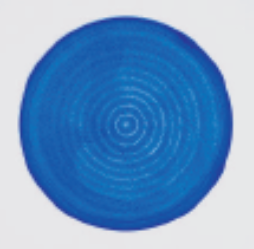In biology, a common technique used to carefully grow a specific type of cell is called cell culturing. When preparing cell cultures, great care is taken to maintain sterile conditions. Typically, the materials are disinfected before use and the cell cultures are prepared in a sterile, vented hood.
Then, for optimum cell growth, cell cultures are carefully placed in an incubator to maintain a sterile and controlled environment.
As an example, mammalian cells are typically cultured in a CO2 incubator with a CO2 level of 5-7%, very high humidity and at a temperature of 37 degrees C. These settings imitate the conditions found in the human body.
However, this is not all that needs to be considered. Recent work suggests that there is a deleterious role played by unwanted vibration in cell culture incubators. Some vibrations can be caused by the incubator itself, such as from the circulation of water to heat the incubator or fans. The environment is, more often than not, the cause of vibrations.

Figure 1. Vibration-induced concentric ring pattern in a 100mm dish containing chick embryo fibroblasts that was stained 1 hour after plating. Image Credit: TMC Vibration Control
For more than 50 years, these types of vibration problems have been well known in the microscopy, photonics and semiconductor industries. Due to this, there are usually facility vibration specifications set by equipment suppliers for places into which their products will be installed. Though it probably should be, this is not the case for incubators.
The issues that vibration can cause are beginning to be understood by some incubator manufacturers.
“Incubator vibration is responsible for some of the most bizarre growth patterns that occur in culture vessels. Its effect primarily occurs on cells when they are trying to initially attach to the surface following inoculation of the vessel. In dishes, vibration will push cells to the edges or middle of the vessel or will sometimes form concentric rings of cells. Figure 1 shows this type of pattern in a chick embryo fibroblast culture.”1
This is a second example from another incubator manufacturer:
“A typical example of standing waves in a cell culture flask is shown in Figure 2. In this case, the standing waves have been formed across the flask.

Figure 2. Cell culture growth in a flask when standing waves are present. Image Credit: TMC Vibration Control
How to Eliminate the Problem?
In a typical cell culture lab, vibrations can come from a number of sources. Aside from the incubator fan, they can come from a centrifuge placed next to the incubator, a freezer or refrigerator turning on and off, and even from the climate control system in the cell culture lab.
Eliminating vibrations may not always be possible due to the construction of the fan or placement of the fan motor.
Since the problem of vibration is essentially due to resonance in frequency, you can try to alter the frequency of your equipment (e.g., incubator) by, for example, placing something heavy in one corner of the incubator; but be aware of the risk of potential contamination in the incubator and be prepared to take necessary measures to minimize the risk.”
Whilst these are excellent helpers for limiting the impact of vibration, there is a much better way to manage vibration issues in the lab. For instance, it would be advisable to place an entire incubator on an anti-vibration platform, like the MaxDamp®, to isolate it from unwanted vibration.

Figure 3. Incubators stacked on TMC MaxDamp vibration isolation platforms. Image Credit: TMC Vibration Control
In this case, two incubators were placed on the MaxDamp vibration isolation platform after being stacked on top of each other. MaxDamp minimizes the transmission of floor vibration caused by other instruments by using the Gimbal Piston air isolator legs.
For instance, say a centrifuge was running nearby the incubators, the vibration from the centrifuge could be transmitted to the incubators, causing the vibration patterns seen in the cell cultures.
Placing the incubators on the MaxDamp platforms means that they are relatively unaffected by the vibrations from HVAC systems, foot traffic, centrifuges or other vibration sources commonly found in life science facilities.
References
- Ryan, John A. “A Guide for Identifying and Correcting Common Cell Growth Problems with Adherent Cells.” We Get You, www.corning.com/worldwide/en/products/life-sciences/resources/webforms/we-get-you-a-guide-for-identifying-and-correcting-common-cell-growth-problems-with-adherent-cells.html .
- Vibration Patterns in Cell Culture Vessels, 2018, https://assets.thermofisher.com/TFS-Assets/BID/Technical-Notes/vibration-patterns-cell-culture-vessels-technical-note.pdf

This information has been sourced, reviewed and adapted from materials provided by TMC Vibration Control.
For more information on this source, please visit TMC Vibration Control.